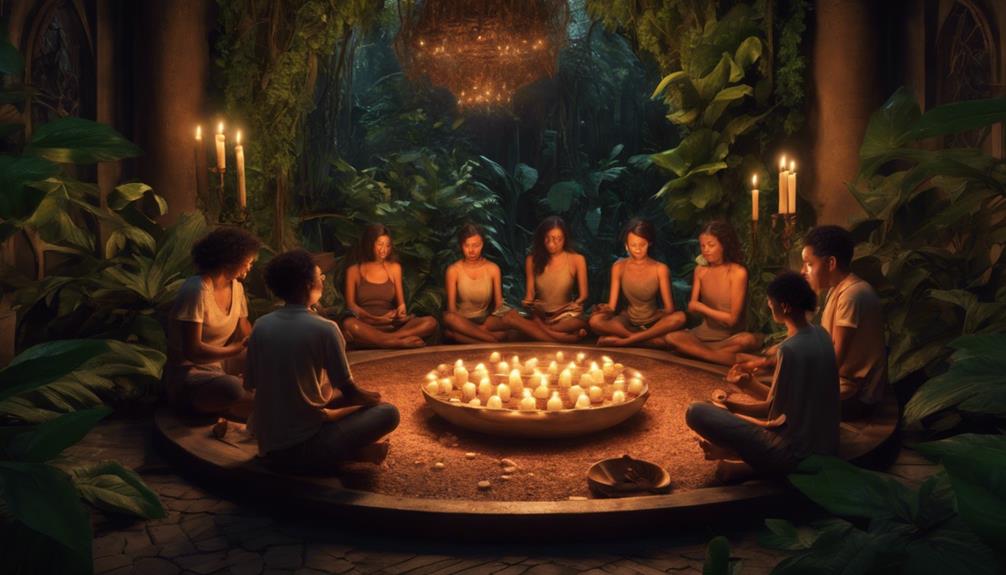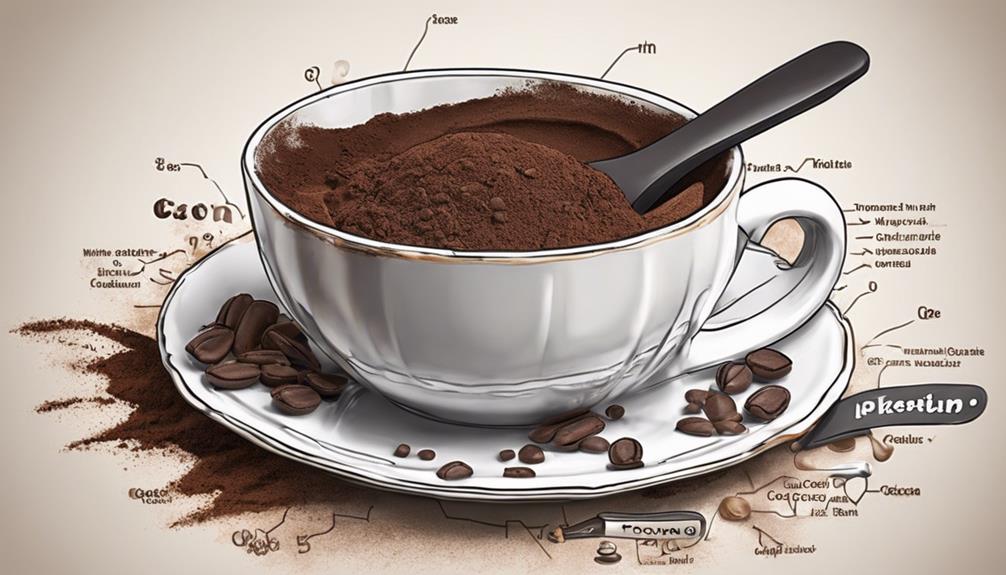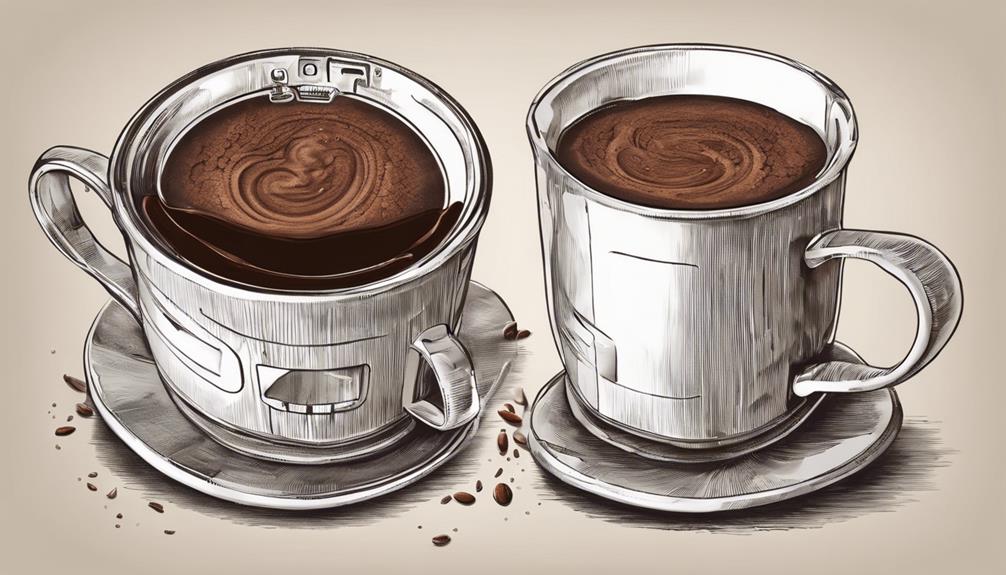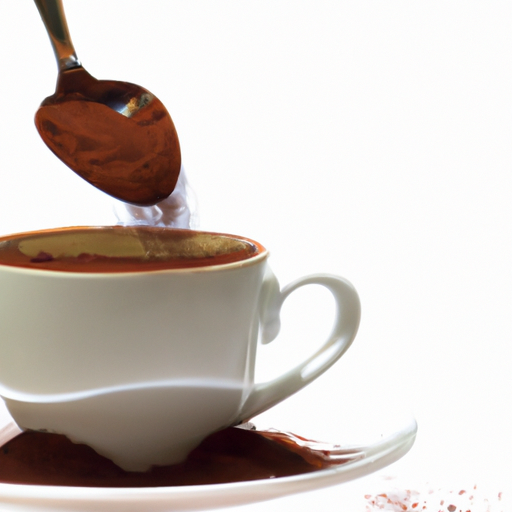Embark on a journey into the sacred realm with a cacao ceremony, an ancient ritual that helps individuals connect with their spiritual core, fostering personal development, unity, and emotional healing. Cacao ceremonies hold significant spiritual importance, hailing from indigenous customs such as those of the Mayans and Aztecs, who honored cacao for its sacred qualities. Through these ceremonies, introspection, emotional release, and elevated states of consciousness are facilitated, enabling participants to delve into deep connections and emotional well-being.
By exploring the essence of a cacao ceremony, you can discover a world of transformative qualities and shared experiences that nurture the soul and expand the mind.
Key Takeaways
- Cacao ceremonies facilitate emotional healing and inner connection.
- Indigenous traditions view cacao as a sacred bridge to the spiritual realm.
- Participants experience unity, introspection, and personal growth in ceremonies.
- Cacao ceremonies offer a supportive space for transformative and healing experiences.
- Cacao rituals promote mindfulness, gratitude, and heart-centered awareness.
Spiritual Significance of Cacao Ceremonies
Cacao ceremonies hold profound spiritual significance in their ancient origins and modern practice. These ceremonial gatherings, centered around consuming ceremonial-grade cacao, have been part of ancient practices for centuries.
When the cacao enters your body, it acts as a key to open the door to your heart, allowing it to unlock and connect with your inner self. This opening of the heart is vital for setting off on a spiritual journey within yourself. The cacao's ancient practice of spiritual healing and transformation is designed to awaken your senses and guide you towards introspection and personal growth.
In this supportive space, you can explore your higher self and integrate your experiences, paving the way for healing and spiritual development. Cacao ceremonies offer a unique opportunity to delve deeply into your soul and nurture a connection between the physical and spiritual planes, fostering a sense of unity and harmony within.
Indigenous Traditions and Cacao Rituals
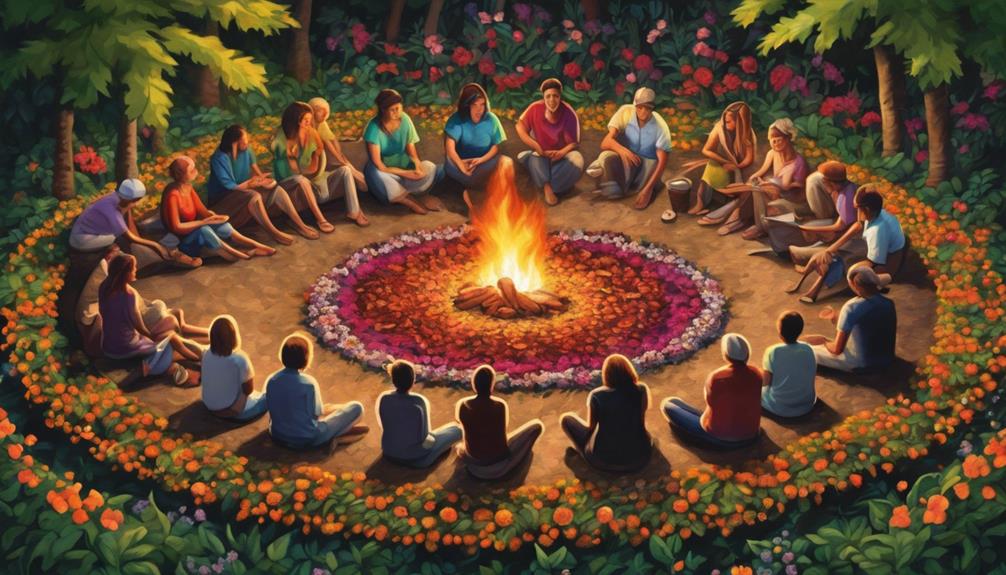
Indigenous cultures, such as the Mayans and Aztecs, held cacao in high regard for its sacred properties. Cacao ceremonies were an essential part of their traditions, serving as a way to connect with the spiritual world.
Through these rituals, participants sought a deeper understanding of themselves and the divine forces around them.
Cultural Significance of Cacao
In ancient Mesoamerican civilizations, the revered cacao plant held profound cultural significance, serving as a conduit for spiritual healing and transformation.
- The Maya and Aztecs incorporated ceremonial cacao in their traditions for spiritual healing and connection with the divine.
- Cacao was considered a divine gift and the food of the gods, providing strength, energy, and courage.
- Maya depictions often show gods emerging from cacao bean pods, emphasizing its sacred nature.
- Cacao played a crucial role in Mesoamerican society, acting not only as a spiritual tool but also as currency due to its immense value.
- The ancient Mesoamericans recognized cacao for its medicinal properties, further solidifying its place as a sacred plant.
Spiritual Connection Through Cacao
Exploring the spiritual domain through ancient traditions and ceremonial rituals involving cacao discloses a transformative journey towards inner connection and personal growth.
Cacao has been revered by Indigenous cultures like the Mayans and Aztecs for its sacredness, using it in ceremonies to facilitate spiritual healing and transformation.
The ritualistic doses of ceremonial cacao are believed to bridge the gap between the ordinary and mystical worlds, offering a space for rediscovering compassion and inner beauty.
In these ceremonies, cacao serves as a gentle aid for integrating psychedelic experiences, fostering personal growth and healing.
Participants in cacao ceremonies often find a supportive environment to explore spiritual connections and probe into the depths of their being, seeking profound insights and transformative experiences.
Power of Cacao for Healing
Through the heart-opening properties of ceremonial-grade cacao, emotional healing and the release of blockages are facilitated in cacao ceremonies. Theobromine in cacao aids in boosting mood and enhancing cognitive function, promoting healing and inner transformation during ceremonies.
Participants often experience a deep sense of connection and unity with themselves and others, fostering a healing environment in cacao ceremonies. Cacao ceremonies provide a safe space for introspection and self-discovery, allowing individuals to address emotional wounds and promote healing. The healing power of cacao ceremonies lies in their ability to create a transformative experience, promoting growth, mindfulness, and spiritual connection.
- Ceremonial-grade cacao assists in emotional healing.
- Theobromine in cacao boosts mood and cognitive function.
- Cacao ceremonies foster connection and unity.
- Participants find a safe space for introspection and healing.
- Cacao ceremonies promote growth, mindfulness, and spiritual connection.
Heart-Centered Awareness in Ceremonies
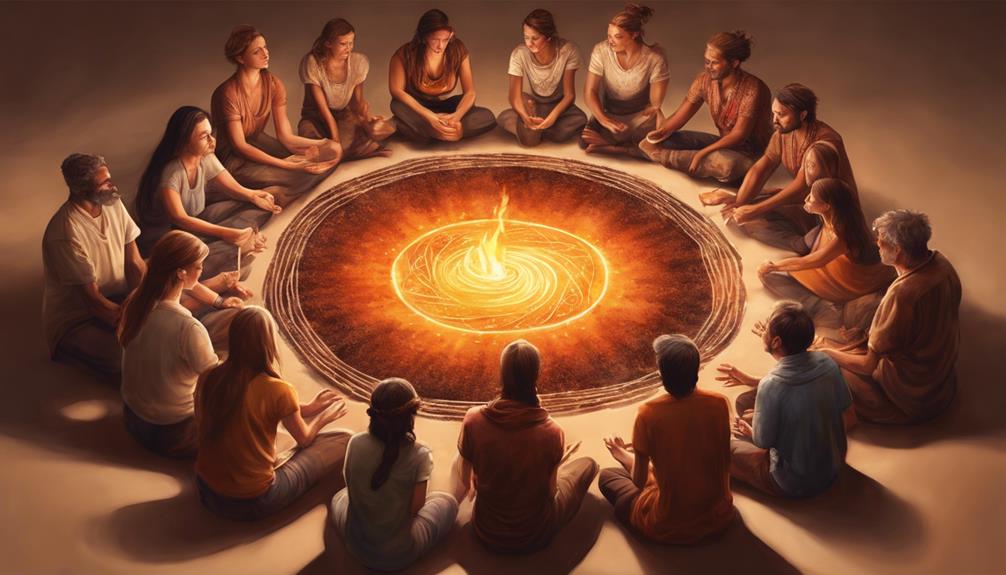
In heart-centered awareness during cacao ceremonies, we focus on opening our hearts to foster emotional healing and connection. This involves cultivating feelings of love, compassion, and gratitude, creating a space for vulnerability and authentic expression.
Emotional Connection in Ceremonies
Fostering emotional connection in cacao ceremonies revolves around cultivating heart-centered awareness and embracing vulnerability. During these ceremonies, participants often experience a deep sense of release and unity, creating a safe space for emotional exploration.
To enhance emotional connections, practices like sharing stories, expressing gratitude, and engaging in guided meditations are commonly utilized. The ceremonial consumption of cacao encourages individuals to tap into their emotions, fostering compassion, empathy, and understanding.
By embracing vulnerability and connecting with our inner selves, we can open up to a profound sense of emotional connection and unity within the ceremonial space.
- Sharing stories
- Expressing gratitude
- Guided meditations
- Emotional exploration
- Compassion cultivation
Mindfulness Practice During Ceremonies
Cacao ceremonies encourage participants to engage in mindful sips of ceremonial-grade cacao, fostering heart-centered awareness for emotional healing and personal growth. By practicing mindfulness during these ceremonies, individuals can cultivate a deep sense of presence and connection. This focus on heart-centered awareness allows for a profound exploration of one's emotions, facilitating a journey towards healing and personal development.
Through the shared experience of mindful sips and intentional presence, participants can enhance their unity and tap into a shared consciousness. The ceremonial-grade cacao acts as a catalyst for this process, opening the door to a transformative experience where individuals can connect with themselves and others on a deeper level within the sacred space of the ceremony.
Emotional Release Through Cacao
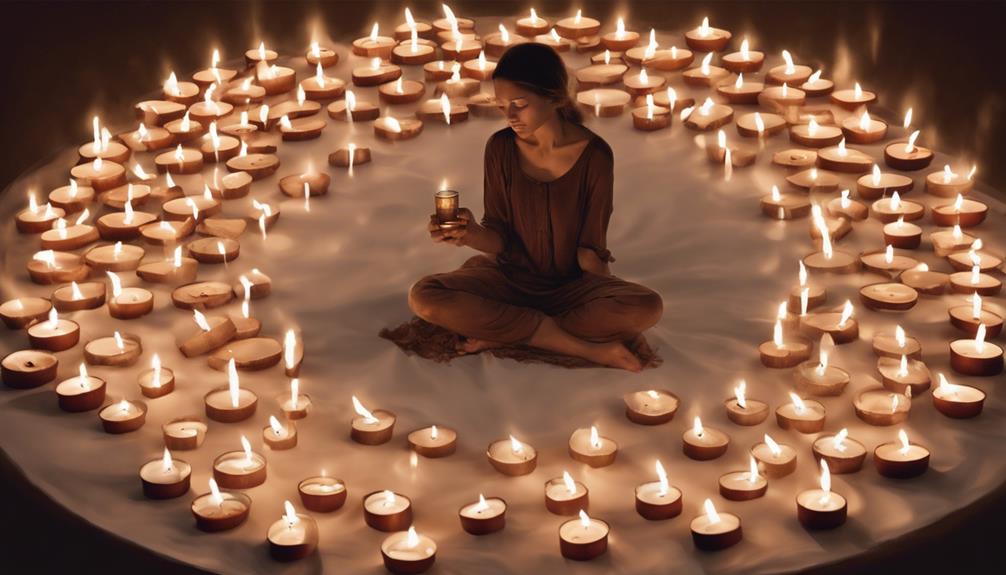
Experiencing emotional release through cacao ceremonies involves tapping into the heart chakra and allowing stored emotions to flow freely. The process can be deeply cathartic, providing a safe space for emotional vulnerability and expression.
Here are some key points to ponder:
- Cacao ceremonies help in opening the heart chakra, facilitating the release of stored emotions.
- The chemical compounds in cacao can trigger the production of serotonin and dopamine, promoting feelings of well-being.
- Participants often encounter cathartic moments during these ceremonies, breaking through emotional blockages.
- Ritualistically consuming ceremonial-grade cacao creates a nurturing environment for exploring deep-seated emotions.
- Engaging in cacao ceremonies offers a supportive setting for individuals to release emotional burdens, fostering healing and personal growth.
Allow yourself to embrace the emotional journey that cacao ceremonies can offer, allowing for the release of pent-up emotions and the opportunity for profound healing and transformation.
Clarity and Consciousness With Cacao
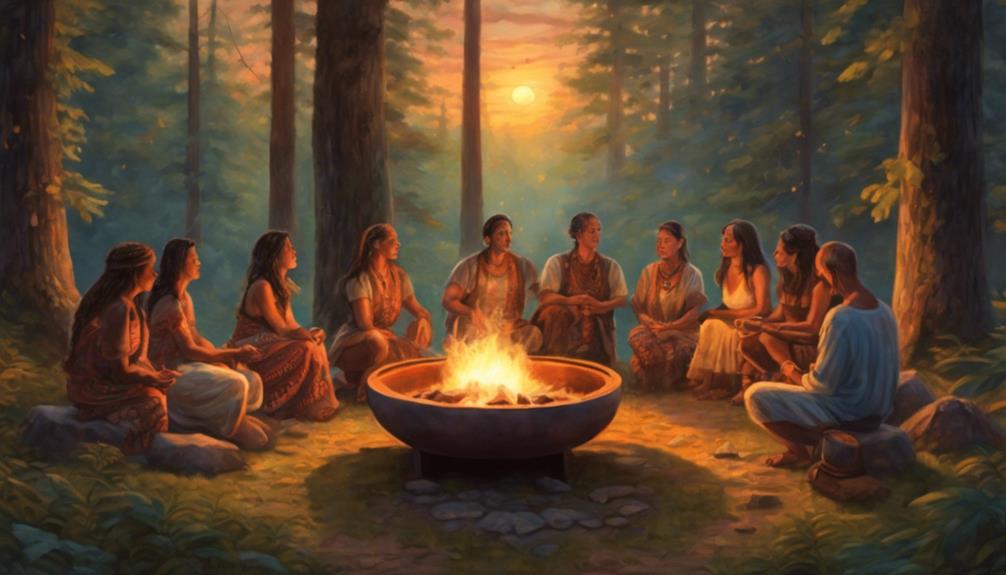
Indulging in ceremonial-grade cacao can lead to heightened mental clarity and expanded consciousness through its unique compounds.
During a Cacao Ceremony, the theobromine and anandamide present in ceremonial cacao help promote focus and mindfulness, allowing for a clearer state of mind. This heightened mental clarity enables participants to engage in deeper introspection and self-awareness, fostering a stronger connection with their inner selves.
As the ceremonial cacao induces a state of heightened consciousness, individuals may experience a spiritual awakening, feeling more attuned to the universe around them. The ritualistic consumption of cacao creates a space for profound clarity, enabling participants to tap into their intuition and inner wisdom.
Through the ceremony, one can explore a dimension of expanded consciousness and heightened awareness, promoting a sense of clarity that facilitates a deeper understanding of the self and the world.
Transformative Qualities of Cacao
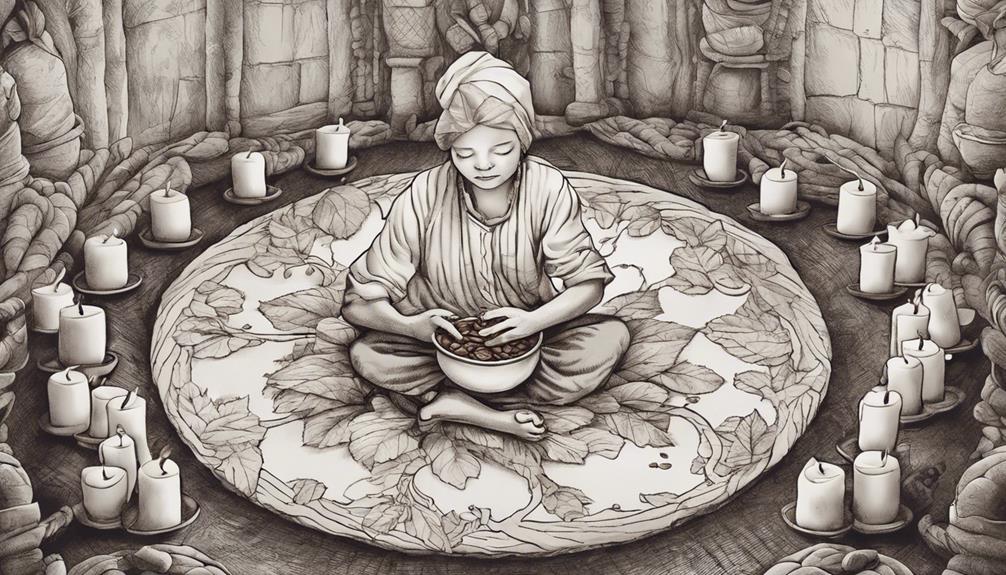
Exploring the transformative qualities inherent in cacao ceremonies reveals a profound journey of emotional healing and personal growth. Engaging in a cacao ceremony offers a unique opportunity to explore one's inner world, allowing for deep introspection and healing.
Here are five key aspects that contribute to the transformative nature of cacao ceremonies:
- Emotional Healing: The sacred nature of cacao helps release emotional blockages, leading to a cathartic experience that promotes healing.
- Deepened Connections: Participants often report feeling a strong sense of unity and connection with others during cacao ceremonies, fostering a deeper sense of community.
- Sense of Community: The communal aspect of cacao ceremonies creates a supportive environment where individuals can share and connect authentically.
- Mayan and Aztec Influences: Drawing from the rich history of Mayan and Aztec civilizations, cacao ceremonies carry with them a sense of tradition and spiritual significance.
- Personal Growth: Through introspection and reflection, cacao ceremonies provide a space for personal growth, self-discovery, and spiritual connection with oneself and others.
Emotional Benefits of Cacao Ceremonies
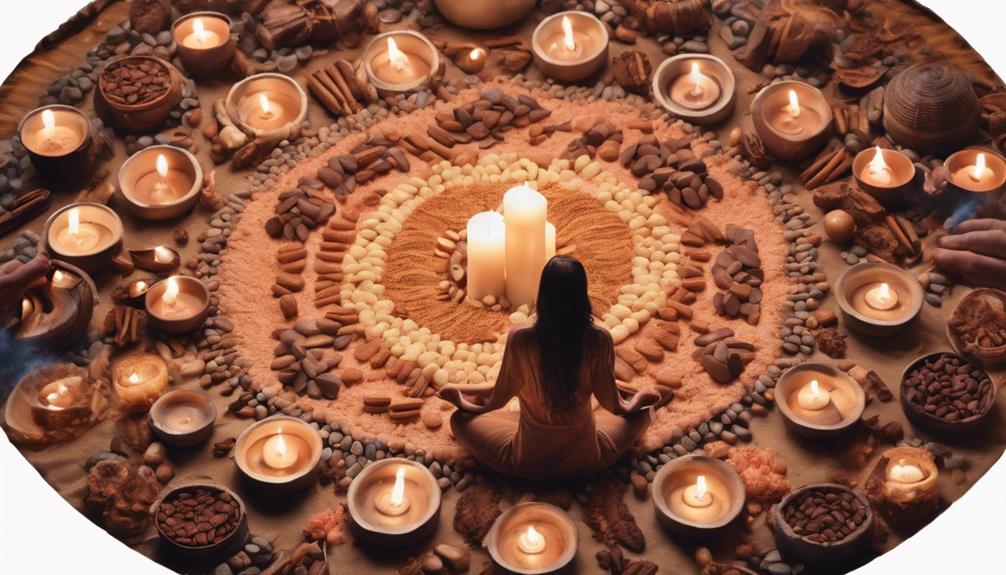
Partaking in cacao ceremonies offers a profound emotional uplift and nurtures a deep sense of connection within oneself and the community. Cacao ceremonies promote emotional healing by allowing participants to release blockages and experience a heart-opening journey. The unity felt during these ceremonies creates a safe space for emotional exploration and sharing. Engaging in a cacao ceremony can enhance meditation practices, mindfulness, and stress reduction. The ceremonial-grade cacao consumption fosters relaxation and a deeper connection to one's emotions and inner self. The shared experience of a cacao ceremony encourages emotional openness, storytelling, and community connection. Through the warmth and comfort provided by the cacao, participants often experience emotional release and a sense of belonging within the group. This unique blend of emotional healing, unity, and community connection makes cacao ceremonies a transformative experience for the mind and spirit.
| Emotional Benefits | Description |
|---|---|
| Emotional Healing | Release emotional blockages and experience a heart-opening journey. |
| Unity | Feel a deep sense of connection and unity within the group. |
| Meditation | Enhance meditation practices and mindfulness during the ceremony. |
| Stress Reduction | Promote relaxation and stress reduction, fostering emotional release and comfort. |
Heightened State of Consciousness
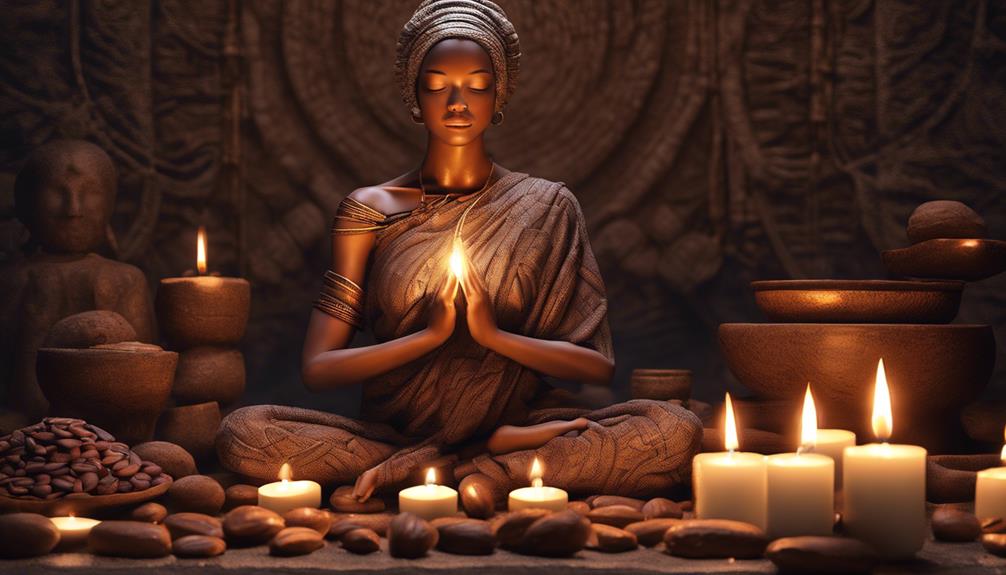
Experiencing a heightened state of consciousness in cacao ceremonies is often facilitated by the natural stimulant theobromine found in cacao. As you begin on this spiritual journey, the cacao's mystical consciousness can guide you through realities of elevated awareness, bridging the mundane to the mystical.
The chemical compounds in cacao, similar to cannabinoids, contribute to an altered state of consciousness, enhancing your perception and introspection. During ceremonial cacao consumption, participants often encounter a gentle exploration to a heightened state of awareness, opening doors to deeper self-exploration and spiritual connection.
Scientific research underscores that cacao ceremonies support the discovery of a heightened state of consciousness, propelling individuals towards a more profound understanding of themselves and the world around them.
- Embrace the gentle exploration to realities of elevated awareness.
- Allow the mystical consciousness of cacao to guide your spiritual journey.
- Explore the altered state of consciousness induced by cacao's chemical compounds.
- Investigate into a heightened state of awareness during ceremonial consumption.
- Experience the bridge between the mundane and the mystical through cacao ceremonies.
Shared Experiences in Cacao Ceremonies
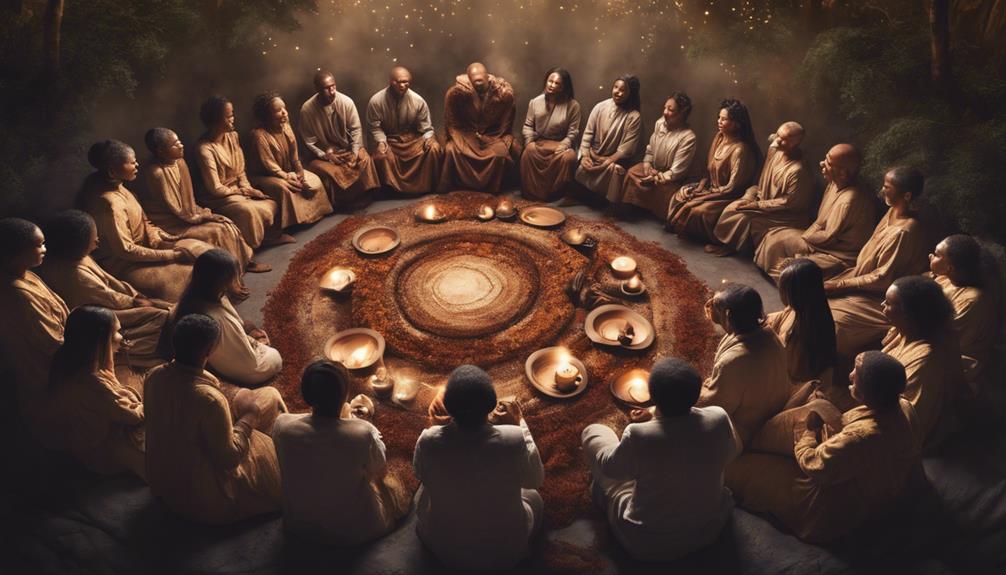
In the domain of cacao ceremonies, the shared experiences weave a tapestry of emotional release, storytelling, and profound connections among participants. Engaging in heart-opening practices during these ceremonies creates a sense of warmth and comfort within the group, fostering a safe space for vulnerability and sharing. Through community sharing, individuals can initiate deeper connections, offering support and understanding to one another. The unity experienced in cacao ceremonies transcends individuality, creating a shared emotional connection that binds the participants together. These gatherings often lead to moments of self-discovery and spiritual connection as everyone starts on a journey of introspection together. The table below highlights the key elements of shared experiences in cacao ceremonies:
| Key Elements | Description |
|---|---|
| Emotional Release | Participants experience a cathartic release of emotions |
| Community Sharing | Individuals connect on a deeper level, offering support |
| Spiritual Connection | Shared moments of introspection and self-discovery |
Frequently Asked Questions
What Is the Significance of a Cacao Ceremony?
The significance of a cacao ceremony lies in its ability to foster personal growth, unity, and mindfulness. It creates a space for emotional release, deepened connections, and enhanced mindfulness, promoting community, openness, and spiritual exploration.
Who Should Not Do Cacao Ceremony?
Inhaling life's essence, I share: avoid cacao ceremonies if heart-sensitive or on certain meds. Expecting or nursing? Protect life's bloom. Allergic or mental health history? Prioritize safety; seek counsel before partaking.
How Do You Set Intentions With Cacao?
I set intentions with cacao by focusing on my goals and desires, clarifying them through writing or speaking. It guides my energy and attention, aligning my thoughts and emotions with my deepest aspirations.
What Do You Learn About Ceremonial Cacao?
I learn that ceremonial cacao is a sacred gift from nature, rich in antioxidants and nutrients. Its essence holds ancient wisdom and healing powers. Drinking it mindfully can lead to emotional healing, deeper connections, and relaxation.
How Does the Essence of a Cacao Ceremony Differ from the Ultimate Cacao Ritual Guide?
The essence of a cacao ceremony is centered around deep emotional and spiritual connections, while the Ultimate Cacao Ritual Guide provides practical steps and ultimate cacao ritual tips for conducting the ceremony effectively. The ceremony emphasizes the internal experience, while the guide offers external guidance for a successful ritual.
Conclusion
To wrap up, cacao ceremonies provide a potent mix of age-old customs and contemporary healing techniques. Through the ceremonial intake of cacao, individuals can access a deeper sense of self-awareness and emotional liberation.
The transformative properties of cacao enable a heightened state of consciousness and communal connections with others. By engaging in a cacao ceremony, one can start on a voyage of self-discovery and healing unlike any other.

